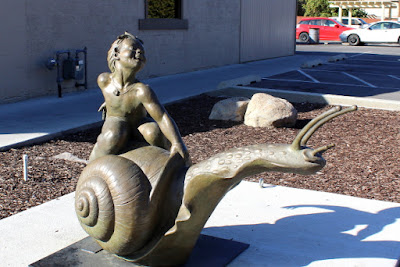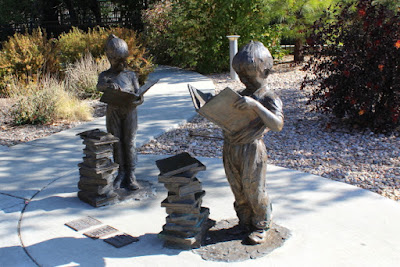Springville (population 29,466), Utah, is located in the southern portion of the Salt Lake Valley that was originally visited in 1776 by Europeans from the Escalante-Dominguez Expedition. The area then remained mostly unsettled until Brigham Young's party arrived in 1847.
In 1850 Brigham Young directed Mormon Pioneers arriving from Eastern United States to settle about 50 miles south of Salt Lake City along what was known as the Mormon Road that ran from Salt Lake City to Los Angeles. The settlement was originally called Hobble Creek because people traveling along the Mormon Road often hobbled their horses along the stream so that their animals could graze on the area's lush grasses. The settlement's name was later changed to Springville because of the many springs in the area.
Springville is now nicknamed "Utah's Art City," due to the strong emphasis the City places on the arts.
Sculptor Cyrus Dallin was born in Springville and his notoriety has had a strong influence on the City's art works. Springville now contains numerous outdoor sculptures from other artist, including Gary Price and Jeff Decker.
The three highest concentrated areas of outdoor sculptures are located in historic downtown Springville, City Center Park, and the area around Springville Museum of Art. Since I had some extra time one afternoon, I spent spent several hours just walking around the various areas looking at all of the sculptures and other art objects. Unfortunately, throughout the day the sun always seemed to be at the wrong angle for taking pictures!
Civic Center Park surrounds the Springville City Center and contains a large sculpture garden in front of the buildings.
Springville Museum of Art is listed as Utah's oldest museum for the "visual fine arts." The building was constructed in 1937 using a Spanish Colonial Revival Style design and was dedicated as "A sanctuary of beauty and a temple of meditation." Over the years there have been several additions to the building.
The Museum is closed on Sunday and Monday, and since I was there on a Monday, I did not have the opportunity to tour the Museum. However, there were a number of outdoor art objects surrounding the building.
The Springville Utah Family History Center is located directly across the street from the Art Museum and is open to the public that are interested in searching for their ancestors.
The Carnegie Library building was constructed in 1921 has now been converted into a Daughters of Utah Pioneers Museum. The museum was closed on the day I visited Springville, but Mark Twain was sitting on a front-yard bench reading a book.
The new Springville Library is a beautiful structure that has some unique ceiling patterns.
 |
| Ceiling in library |
 |
| Ceiling in library |
A creek runs adjacent to the library and the Springville Contractor Legacy Park is directly across the creek from the library. In 1955 Springville received a national award for having the most people working in general contracting per capita in the United States.
When entering Springville the road goes by a nice lake with fountains and Springville Heritage Park is located on the east side of the main road. Heritage Park was originally the site of a fish hatchery, but it was abandoned in 1922. The site was vacant for a number of years and then in 1976 the site was converted into a park and dedicated to the Two Hundredth Anniversary of the United States of America. The park was sponsored by the Utah American Revolution Bicentennial Commission and Springville Federated Women's Clubs.
The Victorian Romanesque style Jefferson School building was built in 1901 on a large site that was adjacent to an old fort. Two other schools were constructed using the same design; however, the Jefferson building is the only one still standing. The building is now used for offices.
There are also other works of art located along the main highway through Springville.
BONUS PICTURE (Even the busboy had time to sit with us long enough to have his picture taken.




















































No comments:
Post a Comment